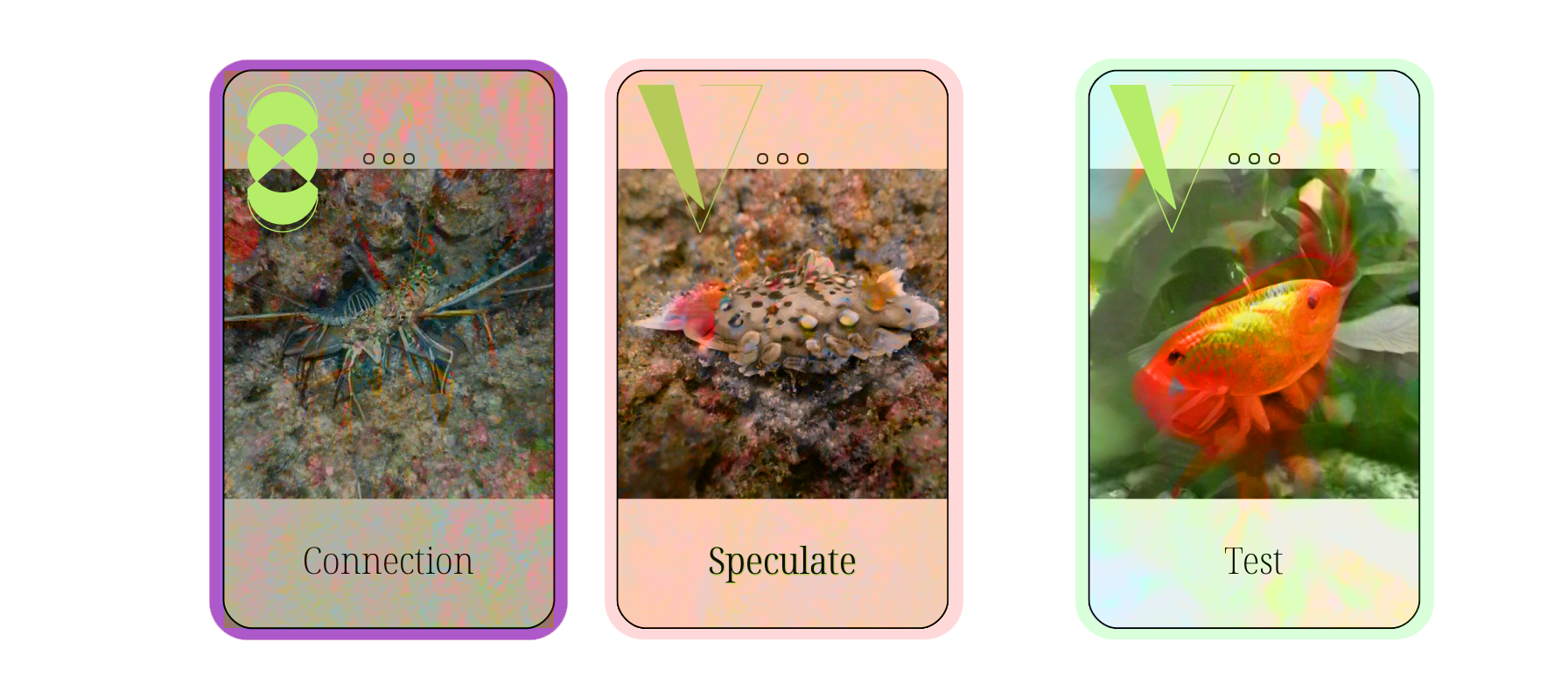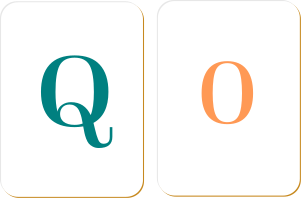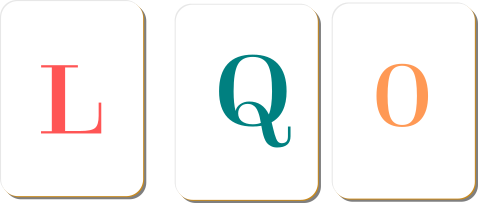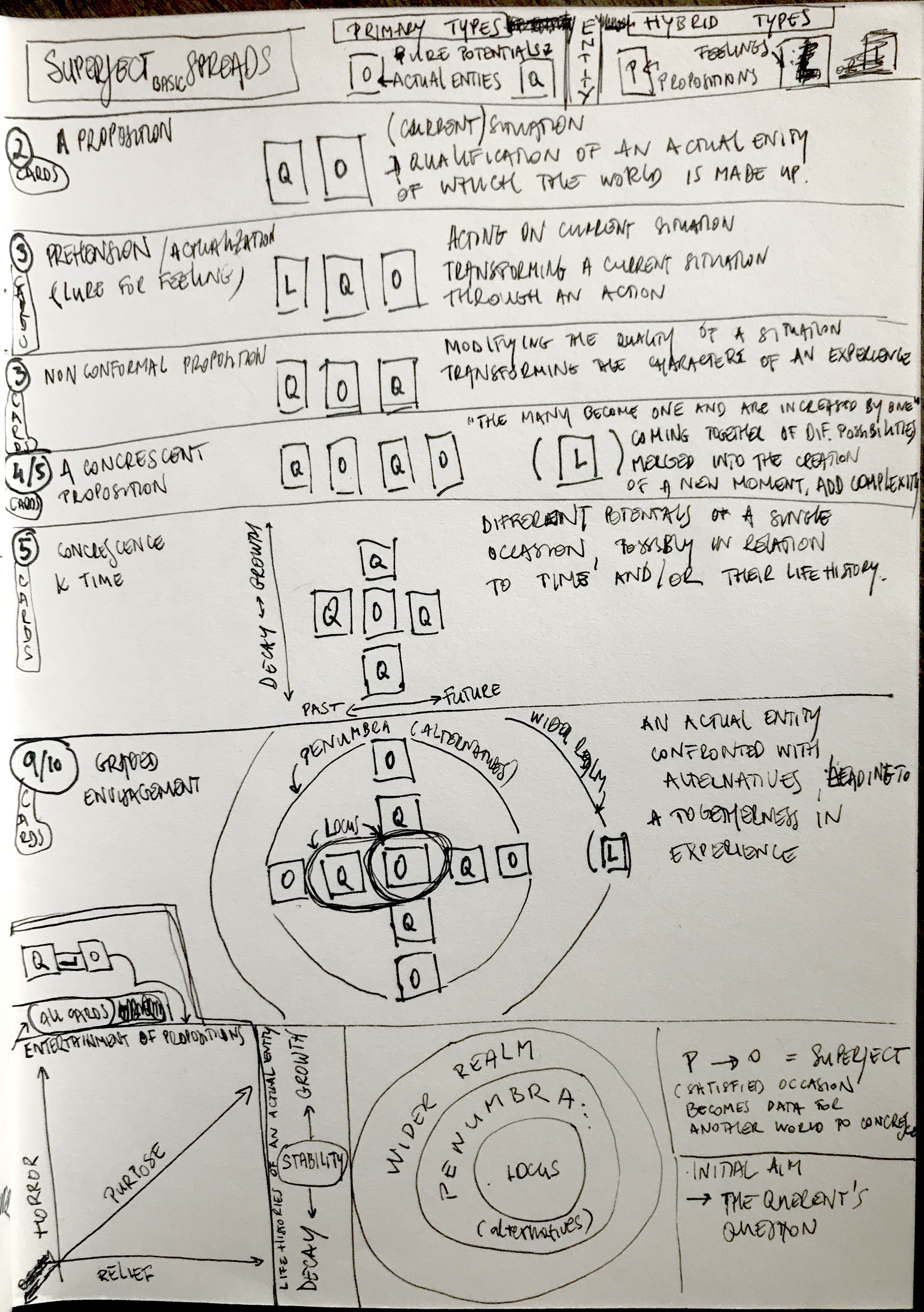11 KiB
(see also https://subetha.fo.am/p/superject-instructions)
primordial nature
There is urgency in coming to see the world as a web of interrelated processes of which we are integral parts, so that all of our choices and actions have consequences for the world around us.
overview
Superject is a card game grounded in the speculative philosophy of Alfred North Whitehead. It's a tool for questioning, prototyping, discussing, and feeling the world anew…
(and a couple of sentences about the backstory, playing with propositions and lures for action, the intention, open-endedness, etc.)
Number of players
A superject game can be played individually or with a group of two or more players
The cards
A superject deck is composed of three types of cards. A game can be played with one or more decks of Superject cards.
Occasions cards describe a type of experience.
Qualia cards describe the qualities of an experience.
when Occasions and Qualia are played in pairs they describe a Proposition, suggesting what a particular experience might feel like.
Lures cards suggest how a Proposition could be made manifest in the Wider Realm

Occasions and Qualia are usually played in pairs or combinations which can be referred to as Propositions

how to begin the game
The game can be played in various ways so usually begins with the players deciding on the scope and duration of gameplay. Before the first cycle, you should agree on the following conditions…
- Is the game more dependent on chance or deliberate discussion?
- How long will the game last? This could be a fixed number of cycles, a fixed amount of time, or it can remain open to see how the game develops.
- Decide if there are any specific relationships between the cards & things in the wider realm (advanced option? anything else to decide about the 'wider realm'?)
once the scope and duration of the game has been agreed…
how to play the first cycle (deliberation)
Divide deck in to O, Q & L piles. place cards face up (in the Penumbra?)
Discuss which cards could be most relevant/interesting/generative/etc
Each player takes an Occasion card in turn and places it in the Locus with a brief description of how they see the Occasion being part of the current situation.
Each player then takes a Qualia card and pairs it with any of the Occasion cards that have been played in the Locus giving a brief description of how they see the Occasion being modified by the Qualia
(lead into a conversation between the players to understand the propositions in play…)
You may want to organise the propositions by moving similar ones closer together, and the more relevant, important or interesting ones closer to the centre of the Locus.
Each player adds a Qualia card to one of the current Propositions in turn.
Once the propositions are in place select a Lure card (needs clarification: one per player per round? or pre-select all the lures to play with? or leave all available in the penumbra? select an agreed subset of the lures to draw from?)
how to continue playing (deliberation)
Each player extends the environment with either an O or Q card from the penumbra
The next player (clarify?) selects a Lure that comes into play. The Lure can be placed next to any P to “entertain the proposition”
The player then describes the Lure as a way to enact the proposition and can suggest ways that the proposition might be realised.
Other players can offer further suggestions, until the group either decides to “realise the proposition” or “entertain another proposition”
If the proposition is not realised, the Lure is discarded (in the Penumbra) and another cycle begins

how to play the first cycle (chance)
Divide deck into O, Q & L piles
Shuffle & place each pile face down
Each player takes one card from each of the O & Q piles in turn and places their cards face-up in the Locus as pairs. The O & Q cards together form a proposition.
Once all the players have created propositions by placing their cards in the Locus, they then attempt to explain how they see their proposition in relation to the current situation (expand?) this can proceed one player at a time, then lead into a conversation between the players to understand the propositions in play…
You may want to organise the propositions by moving similar ones closer together, and the more relevant, important or interesting ones closer to the centre of the Locus
how to continue playing (chance)
Each player takes either an O or Q card from the pile, and uses it to extend one of the propositions in the Locus
The next player (clarify?) selects a Lure and places it next to any P to “entertain the proposition”
The player then describes the Lure as a way to enact the proposition and can suggest ways that the proposition might be realised.
Other players can offer further suggestions, until the group agrees how to “realise the proposition”

how to realise a proposition

how does the game end?

Divination with Superject (DRAFT)
(in progress https://subetha.fo.am/p/superject-divination )
Cartomancy to explore 'the world anew'
Before you begin
A Superject reading can be conducted with or without an "initial aim" in the form of a question. The question provides a specific context, while a reading without a question is about a more general relationship between the querent and the world around them. The question can be held in the querent's mind (it can but does not have to be shared). If it is a more general reading, the mind should be as still as possible to benefit from an open and associative reading.
The querent divides the deck in O, Q and L piles and shuffles each of them separately. Place the shuffled decks face down, either in three piles or in three concentric semi-circles.
If you place the cards in semi-circles: The O cards form the inner semi-circle (the locus of actual entities), Q cards form the second semi-circle (the penumbra of pure potential) and the L cards form the outer semi-circle (as lures for feelings in the wider realm).
A proposition
This basic Superject spread describes a situation or experience. Depending on the question, the proposition might describe an occasion in its current or potential state. All other spreads begin by casting a proposition.

A prehension
This spread suggests or lures the querent to transform the situation through a particular action.

A Non-conformal proposition
This spread suggests how the situation could be transformed by modifying the character of the occasion.

A Concrescent proposition
Two propositions in one spread suggests adding complexity to the initial proposition. It is about "coming together of different possibilities to create a new moment", where "the many become one and are increased by one". If the querent is interested to explore what they could do to make this concrescence manifest in the wider realm, an L card can be added at the end of the reading.

Concrescence and time
This spread suggests different potentials for a single situation (occasion of experience).
The spread can also be read in relation to time. If the time dimension is added to the reading:
- the left Q card refers the past. A quality that gave rise to the occasion, historical characteristics that might be fading away.
- the right Q card refers a hypothetical future beyond the actual entity, a quality needed to transcend this occasion.
- The top Q card refers to growth. This qualia suggests a creative potential inherent in the situation, innovation, novelty.

Graded envisagement
In this spread, the 'actual entity' (O) in a current situation is confronted with multple propositions. While reading this spread, the querent can be encouraged to notice how they feel in response to entertaining different propositions. Note that “Horror, relief and purpose are primarily feelings involving the entertainment of propositions".
The Grand Envisagement reading can be limited to the four alternative paths, or extended with an L card in one or more directions. The Lure suggests how one or more proposition could be entertained in the wider realm and lead towards "togetherness in experience".

notes

etc
compare the Time Breaker Rules and/or Fluxx Rules (as pdf) or EcoFluxx rules as a variant of Fluxx.